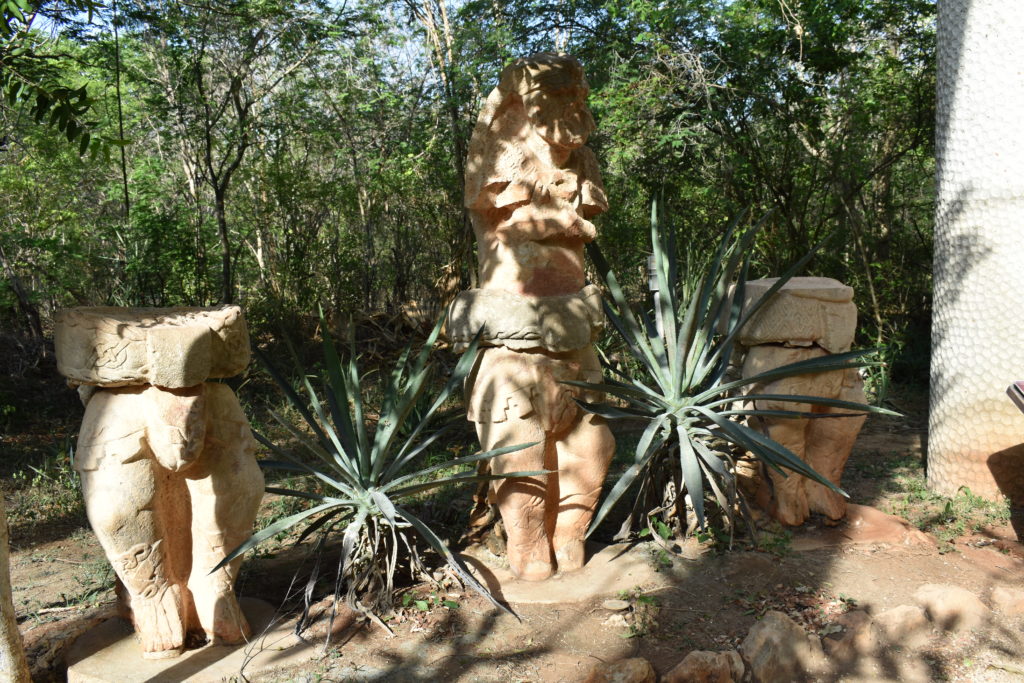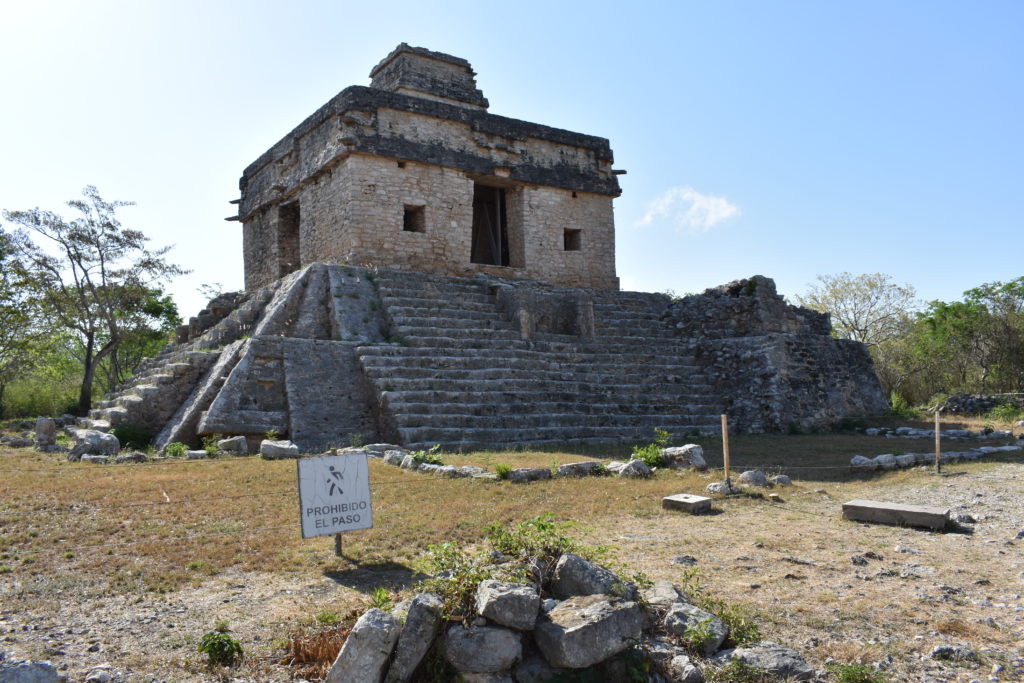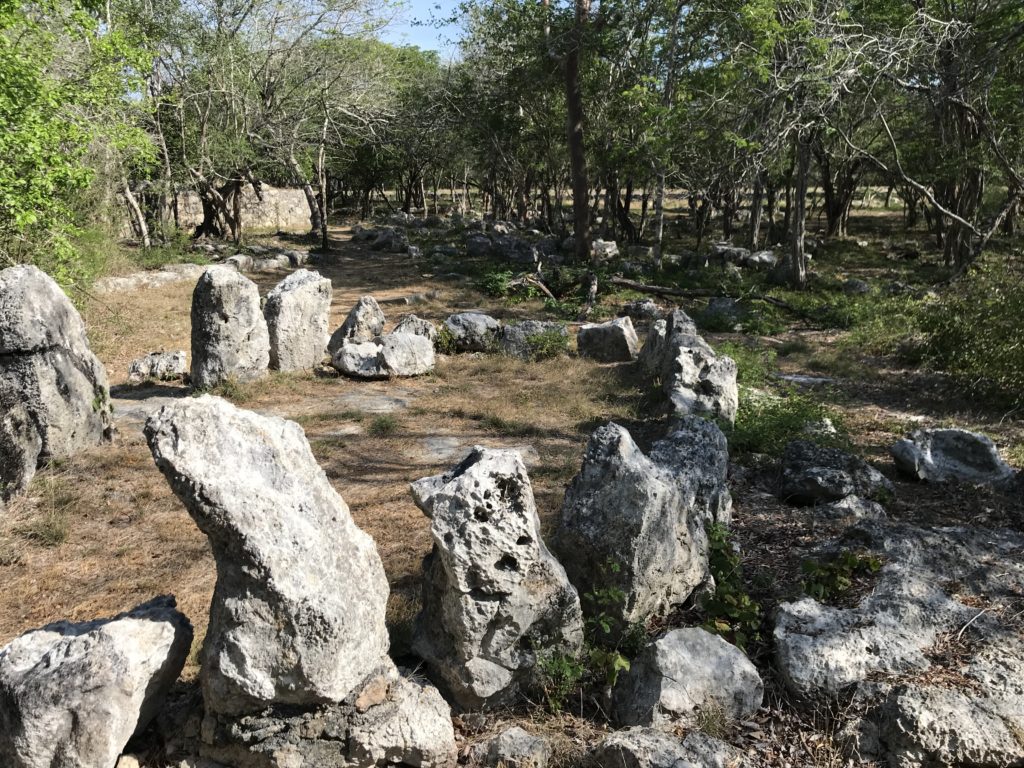If you’re searching for Mérida day trip ideas during a visit to the Yucatán, consider making the short trek to the Mayan ruins at Dzibilchaltún. The ease of access of this cool piece of history makes it one of the best Mérida day trips in an area where there are many great day trips. I visited Mérida earlier this year and had a wonderful time visiting the city and the beautiful Yucatán all around. My day trip that took me to Dzibilchaltún followed by a circuit out along the coast to visit other ruins and the beach was a highlight of the trip.
Dzibilchaltun: What You Need to Know
The Dzibilchaltún ruins are a Mayan archaeological site and museum located a short distance north of Mérida. The site was inhabited for centuries, potentially for millennia by various people groups. The archaeological site has been partially reconstructed, and there are maps and diagrams showing what the city would have looked like when it was still flourishing.
Essential information:
- Hours: opens at 8:00 AM and closes at 5:00 PM
- Location: ~30 minute drive from Mérida. Take the highway north toward Progreso and follow the signs. It’s about halfway between Mérida and Progreso
- COVID-19 Changes: the museum has been closed due to COVID-19 (and maintenance)
- Entry fee: 184 Mexican pesos
- Time required: expect to spend 2-3 hours at Dzibilchaltún
- What to bring: water, sunscreen, and a hat
It’s easy enough to drive yourself to Dzibilchaltún, although you can find tours that include a visit to the archaeological site. Also, while my ticket says the fee is 184 pesos, I was charged more like 250 pesos. I didn’t catch the full explanation. Part of it could have been a parking fee.
You cannot take backpacks or bags into the monument. I almost left mine in the car. While I should have run all the way back, I ended up just paying 50 pesos for a locker and headed off with just my Nikon and a bottle of water.
Overview of the Ruins
The Dzibilchaltún ruins are much smaller than some of the other, more famous, Mayan ruins, but that doesn’t make them not worth visiting. The first section of the archaeological site includes a covered walkway from the main building over to the museum. Unfortunately, the museum has been closed for maintenance and also due to COVID-19. You can peek in the windows, but there’s not much to see from the outside. The museum isn’t all that large anyway, and I’d expect you could experience all of it in under an hour. There are a number of Mayan stone figures outside, however.
From the museum you can follow one of the paths to the main archeological site. Dzibilchaltún is oriented east-west with the main ruins at the west end and the Templo de las Siete Muñecas at the eastern end. You can walk along the road in the middle or the tree-covered path along the north side.
The Templo de las Siete Muñecas is one of the main features of the ruins. Siete Muñecas means “seven dolls” in Spanish. The temple gets its name from seven figurines that were found during archaeological excavation underneath the temple. You cannot climb up the steps of this section of the ruins, although visitors can climb up other reconstructed pyramids at Dzibilchaltún.
Off to the south side of the ruins roughly in the middle of the stretch between the Templo de las Siete Muñecas and the main part of the archaeological site is a set of stone rings marking the ruins of Mayan residences from centuries prior. There is also a trail that heads off to the southwest from this point. I followed it for a while, expecting it to being me around to the rest of the Dzibilchaltún structures. When it didn’t after nearly 10 minutes, I had to backtrack all the way back to the house ruins.
The main section of Dzibilchaltún contains a reconstructed pyramid and multiple other structures flanking a central square in the middle is a church that was built after the Spanish invasion of the Yucatan peninsula. The site was still inhabited at the time of the conquest. At different points during Mayan times, Dzibilchaltún was a reasonably sized city. It is one of the older Mayan ruins, dating from approxiamtely 200 B.C. The estimated number of people that lived in and around the city numbers in the tens of thousands.
I was glad that you could climb up on many of the structures. It was also nice to have the ruins almost to myself, arriving so early. I only saw a few other people during my visit.
Unlike other cenotes, Cenote Xlakah at Dzibilchaltún was not appealing for swimming in the slightest. Even if you wanted to swim, it is closed for the time being. If you’re looking for another Merida day trip idea, consider checking out the three Chunkanan cenotes.
Here is an overall map of the Dzibilchaltún archaeological site. The ticket office, bathrooms, and store are in the Taquilla building, and you can see the museum in relation to the rest of the site. The Templo de las Siete Muñecas is at the bottom (east) and the rest of the site is at the top (west) end.
Dzibilchaltun Day Trip: Final Thoughts
While Dzibilchaltún is not the most impressive Mayan ruins in the Yucatán, it’s proximity to Mérida makes is a great day trip idea if you don’t want to spend a few hours on the road. Both Uxmal and Chichén Itzá are more like 90 minutes from the city. The appeal of Dzibilchaltún is that you can enjoy it and still have half the day to do something else, like visit the beach at Progreso or swim in a cenote. Or simply head back and enjoy the beautiful colonial Yucatán capital. No matter what you decide to do on your visit, know that there are plenty of great Mérida day trips to be had.





























This absolutely awesome article!
I’m Glared you shared such awesome article!
Have you been to Seychelles? Its can offer you similar attractions around + eco friendly beach resorts for staycation.